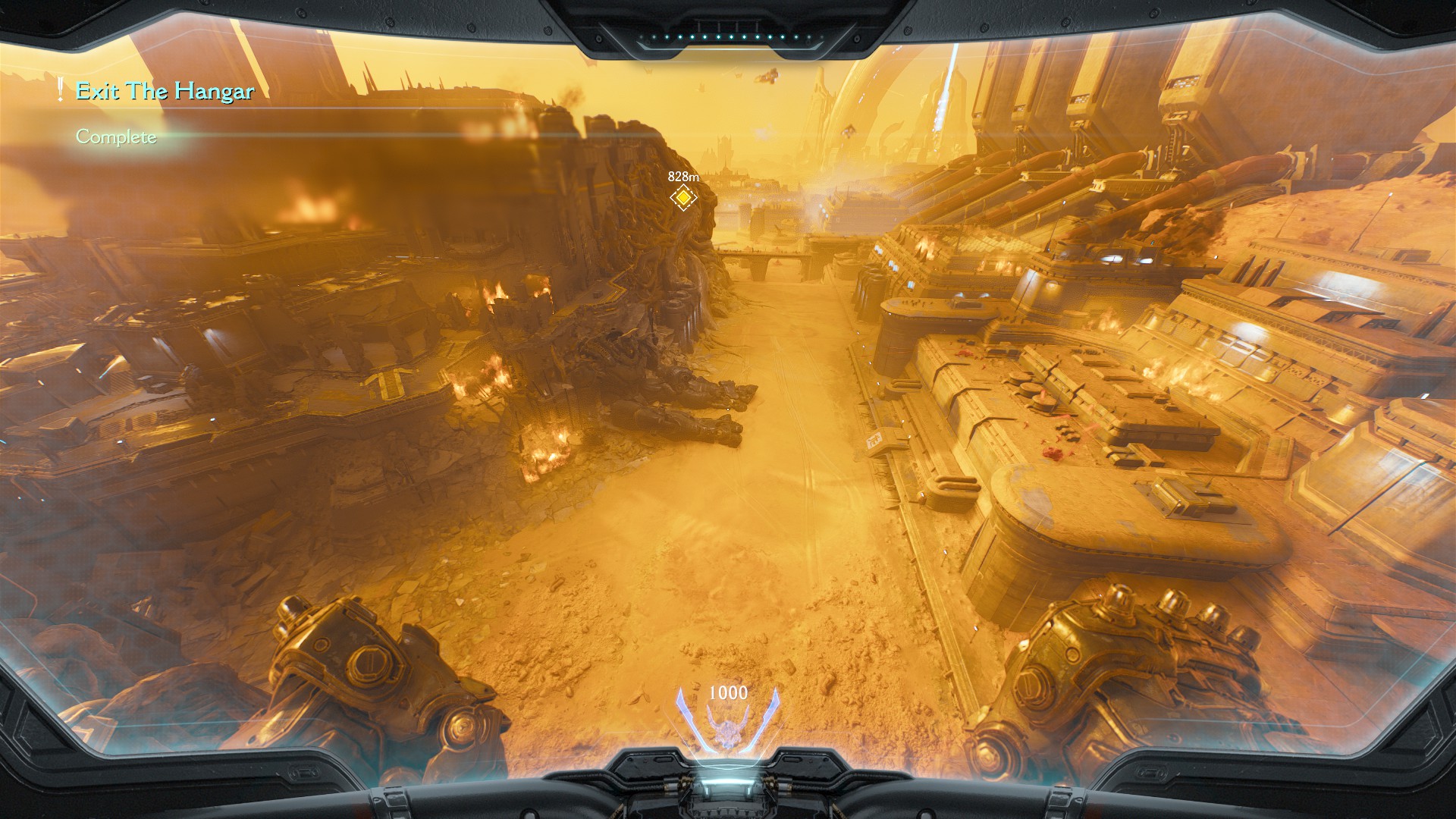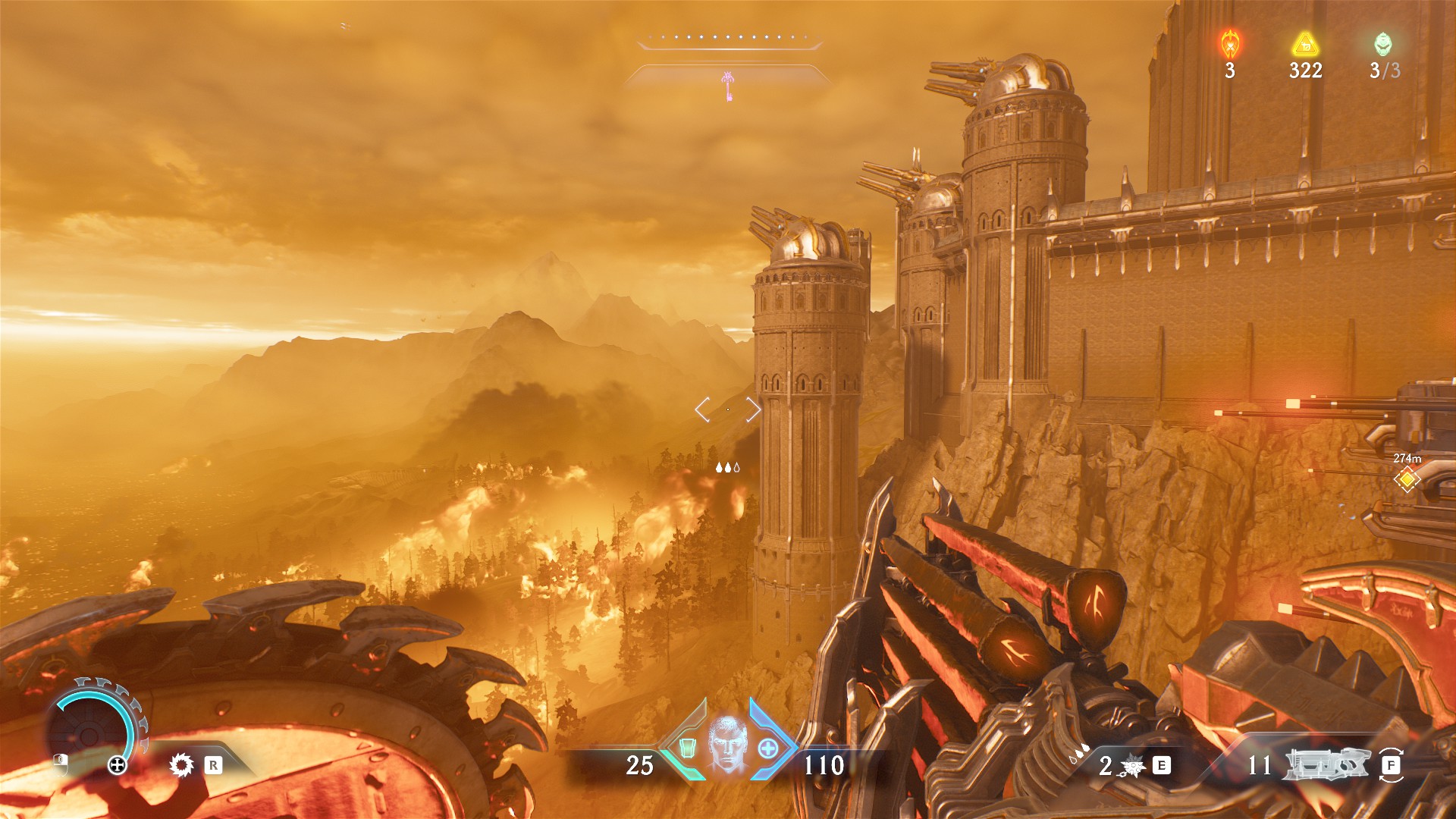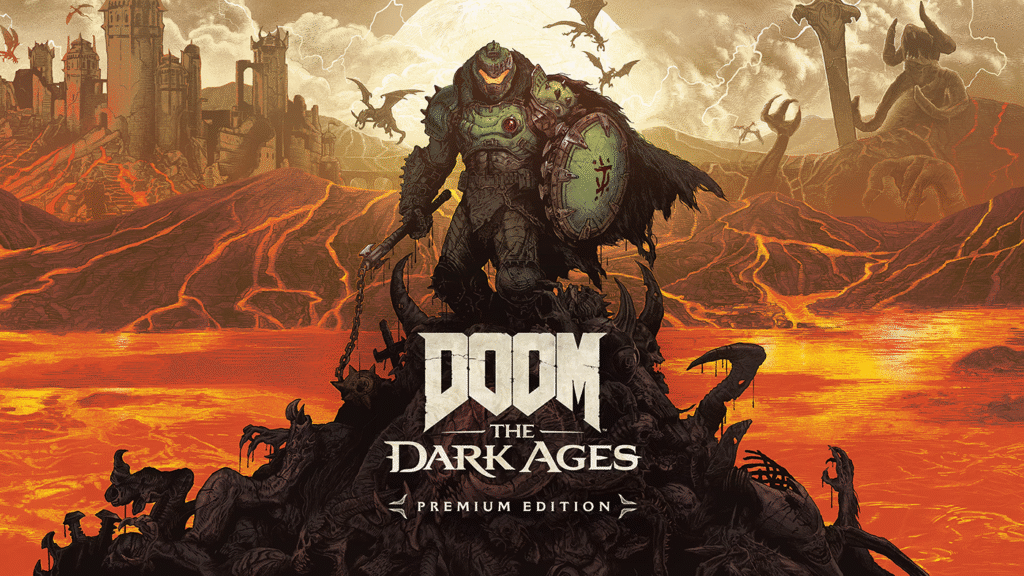Following the knockout release of Doom 2016 and Doom Eternal, it would have been an easy prediction for DOOM: The Dark Ages to be another hardcore technical demon-slaying FPS. Instead, id Software has opted for something entirely different. Veering away from the weapon swapping and snappy movement tech, Dark Ages instead lays a raging power fantasy at your feet and ushers you into a new era of ripping and tearing. Feeling like a bit of an overcorrection of the formula after Eternal’s taxing, unyielding combat, Dark Ages finds itself a more approachable, streamlined version of the 2016 reboot.
DOOM: The Dark Ages’ narrative is largely inconsequential and thankfully skippable. Set sometime before the 2016 reboot, Dark Ages’ story is used more as filler in the wider DOOM universe. While The Slayer himself is mostly untouched and acts more as a plot device than a protagonist, the factions enveloped in this unending war get more of the spotlight. Over the 22 stages and many cutscenes interwoven throughout them, I couldn’t count the scenes I cared to watch through on one hand. A repetitive rigamarole of macguffins, close calls, and forgettable characters, all steeped in a medieval theme. Luckily, Dark Ages delivers a better experience through its gameplay loop.

Wielding a mace and a motorised saw-blade shield, Doom Slayer feels more powerful than ever. As a fan of the more demanding gunplay in the previous two entries in the series, I was sceptical of what Dark Ages was trying to accomplish by easing the stakes and worried the game would be too slow. Instead of hot-swapping guns to maximise damage, there’s an emphasis on using Doom Slayer’s new shield to enter a flow state of combo carnage. Whether you’re tossing your buzz-saw into a crowd of demons, barging forward with great might, or parrying an enemy’s attack, this beefy buckler is a great centrepiece for DOOM’s latest gameplay direction.

Accompanying the addition of this aegis are some new and returning upgradeable guns from previous titles. The Super Shotgun, while sorely lacking the meat hook from Eternal, is still one of the most formidable weapons you can have in your arsenal. The BFG, this time around, has been transmogrified into a weapon befitting the medieval-futuristic era you find yourself in, but still packs a frankly silly amount of power. By this point, it’s no surprise that each and every weapon that id Software put into their games feels powerful and punchy. The same cannot be said for the sore lack of glory kills, which are now more situational instead of the mainstay of combat like in the previous two titles.

Where The Dark Ages really started to fall short for me were the gimmicky Mech Suit and Dragon missions that not only break the pacing of the campaign but are void of the tactile, crunchy feeling you get from the boots-on-the-ground gameplay. DOOM has always been about a single, unstoppable man against an insurmountable amount of demons; putting The Slayer in a Jaeger feels less epic like TitanFall and more redundant like putting Sonic inside a race car.
READ MORE: Elden Ring Nightreign Review — Far From Tarnished

Argent D’nur’s open battlefields are great in a vacuum – expansive, atmospheric, and complex enough to entice exploration. Throw in a map that shows you every single inch of the place, including all secrets and pick-ups, and that magic is gone. Still, the constant barrage of Hell Spawn materialising around you in these large spaces is enough to keep you entertained until you reach your next objective marker. Foes consist of old familiar zombies and Arachnotrons, along with some new ones like the terrifying Komodo or the Aggadon Hunter.

Even with this new open play style The Dark Ages boasts, id Software pulls back this increased player agency by adopting the ubiquitous parry mechanic. It’s quite often that I find myself at odds with parrying in games, far too many wanton implementations that aim to frustrate the player rather than actually adding value to the gameplay loop. Thankfully, it feels right at home here in The Dark Ages. Not only a challenging addition to the already frantic combat, but successfully parrying an attack rewards you with stuns and other boons later in the game.

If you’re having issues with parries, there are plenty of options to adjust timing windows and difficulty to your liking. Another handy option I found was the customisable high-contrast mode, allowing me to better distinguish enemies from the environment and recolour parryable attacks to better suit my broken, colourblind eyes. Other sliders include enemy damage, player damage, game speed, and more.

DOOM: THE DARK AGES REVIEW
DOOM: The Dark Ages feels like a victory lap for id Software, regardless of how the fans have taken it. Not every swing for the fences hits its mark, but the things that do make this game fun. Every system that’s built around the Slayer’s new Saw Shield works better than it has any right to, and with the more open mission style, player freedom is put at the forefront of this medieval ripping and tearing. While there are certainly disappointing elements, namely the whole narrative and lackluster soundtrack, Dark Ages is a welcome evolution of the formula and a great way of capping off the DOOM reboot trilogy.
PROS
-
New formula works well despite being such a large deviation from previous games
-
All the ripping and tearing you can ask for, with a futuristic-medieval coating
-
Plenty of accessibility options to customise your experience
-
Gunplay is excellent, and the new shield is a great addition
CONS
-
Score feels underdeveloped and downplayed
-
Certain missions are a bit tacky and could’ve been left out
-
The narrative as a whole feels unnecessary and brings the whole package down significantly
Reviewed on PC. A review code was provided by the Publisher for purposes of this review.
